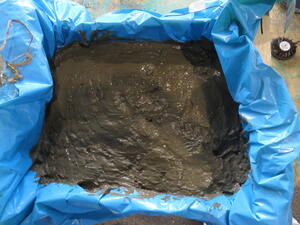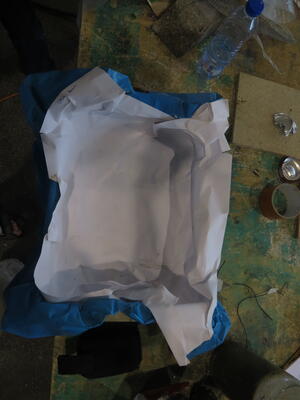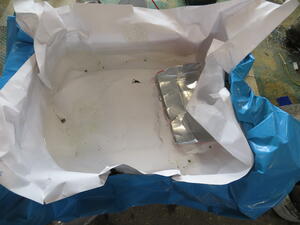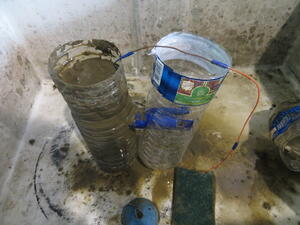Table of Contents
Experiments "Nantes1"
These experiments took place in the Summerlab organised by Ping at Nantes, from July 9th to July 11th, with Chiara Bedin, Etienne Maillard, Nadège and Matthieu Gonnet.
One Container Design
Results
- Peak voltage at 100mV, drops to 60, stable.
- Voltage changes with oxygenation - + 10 mV.
One Container in Crate Design
- Layed down the jar in a crate covered with a plastic bag and filled with water.
- Five times bigger cathode, made of wiring, and then replaced by a flattened aluminium can.
Why ?
- Augemented cathode surface area & reduced water layer width for oxygen access.
Results
- No improved voltage with bigger wiring cathode.
- Improved voltage (300 mV) with aluminium can cathode.
- When putting directly the multimeter cathode in water, we obtain 600 mV.
Conclusion
- The geometry of the multimeter cathode may be better for voltage than the one made of wiring or aluminium can. However, surface area is necessary to obtain current.
Crate Paper Design
Why?
- Reduced PEM width.
- Augmented electrode (both) surface area.
Results
- Negative voltage when putting a rock on cathode to maintain it in water.
- No improved voltage by the new flat design.
- Still no current measurable, probably very low.
- The addition of coke drops (H+) at the cathode do not help current generation.
Conclusion
- Is paper a good PEM ?
Two Containers Design
- Two bottles
- Saline bridge made of rope dipped in salt solution & wrapped in tape.
- Hard-drive metal box as electrode material.
Results
- The addition of coke drops (H+) at the cathode do not help current generation.
Other results
- Two multimeter electrodes directly in water: about 30 mV.
- One mutimeter electrode on aluminium can dipped in water, one directly in water: about 30 mV.
- If water is not clean, voltage increases up to 100 mV.
- Two multimeter electrodes in the mud: 10-80 mV depending on location.
Overall Conclusion
- Maybe it needs a longer period to get started - eating up all the oxygen around the anode.
- Maybe our PEMs are not good.





